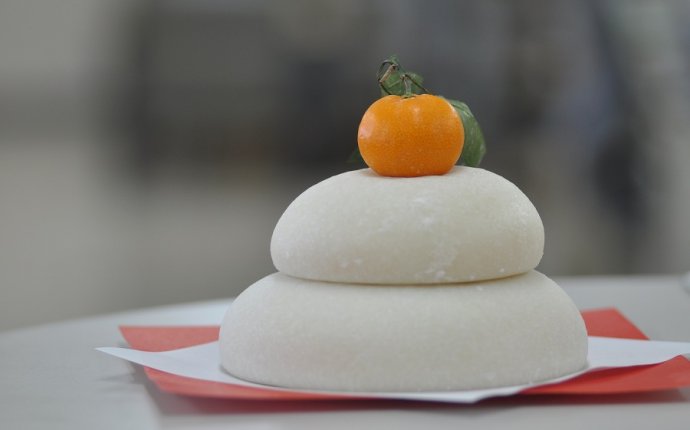
Japanese New Year activities
Up through the 25th of December, Japan is all lit up with lights and other Christmas decorations. However, as soon as December 26th hits, the Christmas decorations are taken down and the New Year's decorations go up. Among the cultural ornaments you might notice are "kagamimochi", two mochi rice cakes stacked on top of each other with a daidai orange on top, "kadomatsu", paired arrangements of bamboo and pine placed at entrances, and "shimenawa", ornaments made of rope often placed at entrances to ward off evil spirits. It's also common to see decorations featuring the zodiac animal of the coming year; 2016 is the Year of the Monkey.
December 26th - 28th, 30th
Mochi, or rice cakes made from glutinous rice, are one of the highlights of New Year's cuisine and decorations. Because making mochi is a labor-intensive process, nowadays most of it is done by machine, but for New Year's, only the old-fashioned way, or "mochitsuki", will do. How does it work? Basically, mochi rice which has been soaked overnight and cooked is pounded repeatedly with a big wooden mallet until it reaches the desired sticky, stretchy consistency, after which it is shaped for consumption. Batches of mochi are usually prepared in the days leading up to New Year's eve and it is featured in kagami-mochi decorations and dishes like ozoni.
December 31st
Literally meaning "year-crossing" soba, "toshikoshi" soba is eaten as the last meal of the year in Japan. Its purposes are both practical and symbolic; because so much time is spent preparing for the New Year, a simple dish of buckwheat noodles helps to lessen the burden. It seems the symbolic meaning was added as an afterthought, varying depending on who you're talking to, but most believe that the long noodles imbue longevity. Also, it is believed that you'll invite bad luck if yuo don't finish all your noodles by the time the new year arrives.
Much of the new year customs in Japan concern purification rites. This ritual, known in Japanese as "joya no kane", occurs at Buddhist temples across Japan on the last day of the year. The temple bell is struck 108 times, symbolizing the 108 earthly temptations as taught in Buddhism, and thus the act is a way of ridding ourselves of these sins in preparation to start the next year fresh and new. Some temples allow visitors to ring the temple bell after the ritual has been completed. Doing so is said to bring fortune.
January 1st
In a country that is popularly known as "the land of the rising sun", it's no wonder that many Japanese hold the belief that the first sunrise of the year, or "hatsuhinode", has a supernatural quality. Making a prayer at the sight of the sun peering over the horizon for the first time in the new year is said to bring good luck, especially when done at places where the view of the rising sun is magnificent. Many people will head to the mountains or the beach, waiting for the sun rise and for the year to start anew.
January 1st - 3rd
There are two main types of cuisine eating during New Year's festivities in Japan: "osechi" and "ozoni". Of course, both are delicious.
Osechi dates back to the Heian period (795-1185). Back then, the Japanese were especially superstitious, and held the belief that it was unlucky to cook or use the hearth during the first 3 days of the new year. Thus, all the food to be eaten during this period had to be prepared ahead of time before the new year started. Because of this, dishes that keep well over the course of several days is essential to osechi cuisine: simmered dishes, dishes featuring dried ingredients, and pickled foods make up the main core of the New Year's feast. Additionally, each dish has a symbolic meaning related to longevity, good health, fertility, joy, and more-increasing one's fortune upon consumption.









